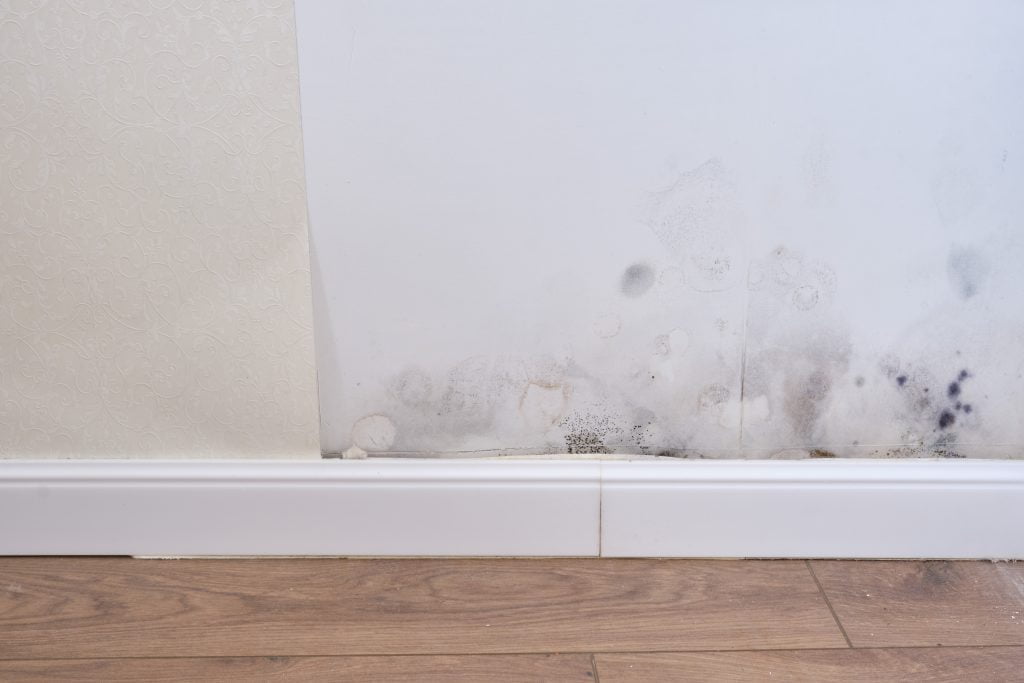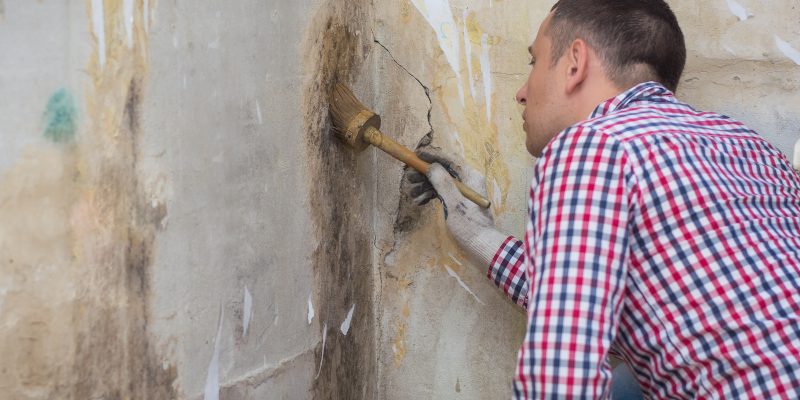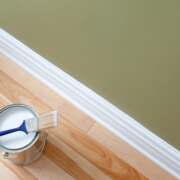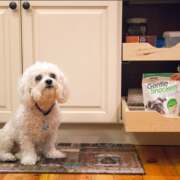The combination of mold and mildew in a house spells disaster in the long run, especially if left to develop further. In most cases, they start to form within dark, moist areas, topsoil and can overwhelm most homeowners once they discover them. If you do not detect the rapid growth of fungus in time, it can be a costly endeavor. Knowing how to properly deal with mold issues, as well as being familiar with the mold removal costs will make things easier to handle.

Black mold on the wall with wallpaper and plinth
Often, many homeowners can deal with mold issues without hiring a professional. You can do this with timely cleaning and using commercial solutions or homemade remedies to get rid of small areas of mold. However, if the growth covers a large area or you are dealing with the dangerous type, you need a mold removal specialist from a reputable company, such as Puremaintenanceofwashington.com, to get rid of it properly.
How Does Mold Grow?
Mold typically develops once spores or microscopic dust-like seeds float in the air to find the right spot to grow. Mold prefers moist places to flourish. The spores settle on damp surfaces where there is poor airflow.
Although mold also forms outdoors, usually in areas with rotting leaves, those that form indoors pose a greater risk. Kitchens, bathrooms, and basements are the ideal areas in the house as these provide the right environment for mold growth. The mold can also develop on the internal walls and ceilings when insulation for cold and water ingression is lacking.
What Are The Different Types Of Mold?
Here are some of the common types of mold found in houses:
- Alternaria. It is typically found indoors, such as bathrooms, kitchen cupboards with moist pipes, or around showers. It grows throughout the year, but common during summer.
- Aspergillus. This grows on dry surfaces indoors, such as plasterboard or baking flour, and prevalent during late summer and mid-winter months.
- Black mold. As one of the most dangerous types of mold, it typically grows in damp areas, such as bathrooms. Black mold often forms as dark patches on the ceiling or wall, and can be moist or slimy to the touch. It grows at a steady pace throughout the year in areas that are damp and with poor ventilation.
- Cladosporium. It thrives in both cold and warm places, such as wooden surfaces and fabrics.
- Penicillium. It takes on a furry or fluffy appearance, and often grows on food that’s about to spoil or rot. You can also find it in the grass or leaf cuttings and rotting wood outdoors. It is prevalent during the late summer and mid-winter months.
Budget-Friendly Mold Removal Practices
The following tips will help you save money on costly mold removal services:
- Reduce Moisture In Your House
Good ventilation is a vital factor in preventing the growth of mold in your house. A well-ventilated house is the best defense against mold growth; otherwise, it can leave you with costly damages. There are several measures to prevent mold growth in your house in the first place, such as:
- Avoid drying laundry inside the house since it leeches moisture into the air.
- Keep windows open and ensure proper ventilation when using hot baths or showers
- Wipe down wet surfaces and opening windows to lessen the dampness and condensation
- Use A Dehumidifier
You can use a dehumidifier if you cannot properly ventilate your house. After using the device, you might be surprised at the amount of water you have to empty and the moisture inside your house.
Although a dehumidifier will require electricity to run, it can be economical in the long run. The device will help you save on expensive mold removal and the extra cleaning it requires. Additionally, if your house is less humid, you will have a comfortable environment, especially during the damp and cold months of the year.
Having a dehumidifier can also lower the costs of heating. Lowering the moisture and condensation with a dehumidifier will allow you to reduce the thermostat a few degrees, while maintaining a comfortable environment. The reduction in gas or electricity necessary to keep your house warm could provide you with good savings to your budget.
- Do Regular Cleaning
If you find signs of mold early, you can control the growth with regular cleaning and proper ventilation. Simply wiping with a hot water detergent solution can easily keep your house free of mold. However, if mold has already spread, you need to use stringent measures to get rid of the mold. Aside from the common household cleaners, such as bleach, you can use these options to save money while effectively removing mold:
- Vinegar: Apply using a clean cloth to wipe away the mold. After rubbing the site with a moist cloth, use a dry, clean cloth to dry the site.
- Baking soda: Combine two tablespoons of baking soda with 500 ml of warm water. Transfer in a spray bottle and mist on areas with mold. After rubbing the area, clear off any remaining residue with a clean cloth to prevent the return of mold.
- Tea tree oil: Prepare a solution by combining two teaspoons of tea tree oil with 500 ml of warm water. Transfer in a spray bottle and mist onto areas with mold growth.
- Hydrogen peroxide: If you want an alternative to bleach, hydrogen peroxide is a good choice. Prepare a solution by mixing two parts water to one part 3% hydrogen peroxide. Use a clean cloth to apply or mist using a spray bottle for cleaning.
- Borax. With its strongly alkaline nature, you should be careful when handling undiluted borax to avoid skin burns. Always wear rubber gloves and safety goggles. Dissolve a solution of 100g of borax in a liter of warm water. Use the spray method or apply with a cloth on the mold.
- A mixture of vinegar and borax: The combination of vinegar (acidic) and borax (alkaline) will effectively eliminate mold. Prepare a blend by mixing 25g borax with 50ml vinegar to one liter of warm water. Mix thoroughly and apply with a clean cloth. Rub the area with mold growth rigorously.
- Clean Upholstery
An elevated level of humidity can cause your house to hold a lot of moisture. Aside from the walls and floors, your upholstery can retain moisture and provide the ideal environment for mold. One way to keep your furniture and upholstery dry is to ensure proper ventilation in your house by opening the windows or using fans. In case the wood and fabric get wet, mold will start to grow in just two days.
If you can remove the fabrics for washing, do this regularly to prevent the mold from growing. In most cases, the laundry detergent and heat from the dryer should effectively eliminate the mold spores.
In case you cannot remove the fabric, transfer the furniture outside to prevent the mold spores from spreading. Vacuum the site of the mold growth to get rid of as many spores as possible. Follow-up by applying a solution of mild alcohol and water. Take note that the alcohol should kill the mold spores while the sun dries up the fabric.
- Remove Mold On Drywall
If you spot a small growth of mold on the drywall, there is no need to cut the entire drywall. Creating a small cut on the drywall will prevent the mold from spreading to the adjacent walls. If you have the right tools, such as sandpaper, small saw or X-ACTO knife, scrub brush, and a patch kit, you can readily do this task.
Add a few inches outside the area with mold when cutting out the drywall to ensure that no spores are left. After removing the section of the drywall, sand the perimeters of the drywall and any bordering studs that might have mold. Clean the studs and along the edges of the drywall, including all areas you can reach. Once the area thoroughly dries up, use a patch kit to repair the wall.
- Use A Cooker Hood
While cooking, it produces steam that can add moisture to your house. Generally, if your kitchen has a cooker hood, you must make sure that it vents through an exterior wall to drive out the cooking moisture from the room.
If a cooker hood is on recycle mode or not venting outside, it will not lessen the moisture inside the house. It is not effective in preventing the formation of mold. Aside from a well-functioning cooker hood, it would be best if you also kept the windows open to improve the ventilation in the kitchen. Try leaving the windows open for an hour or longer after cooking to lessen the moisture left in the indoor air.
Final Thoughts
With the help of these mold removal tips that can help you save money, you can effectively prevent the formation of mold and get rid of them once you spot the early signs of growth. You can do most of these tips, but if you suspect that the mold is the dangerous type or the growth is too extensive, calling a professional might be a better choice to effectively get rid of the mold, while keeping your family safe at the same time.










Comments